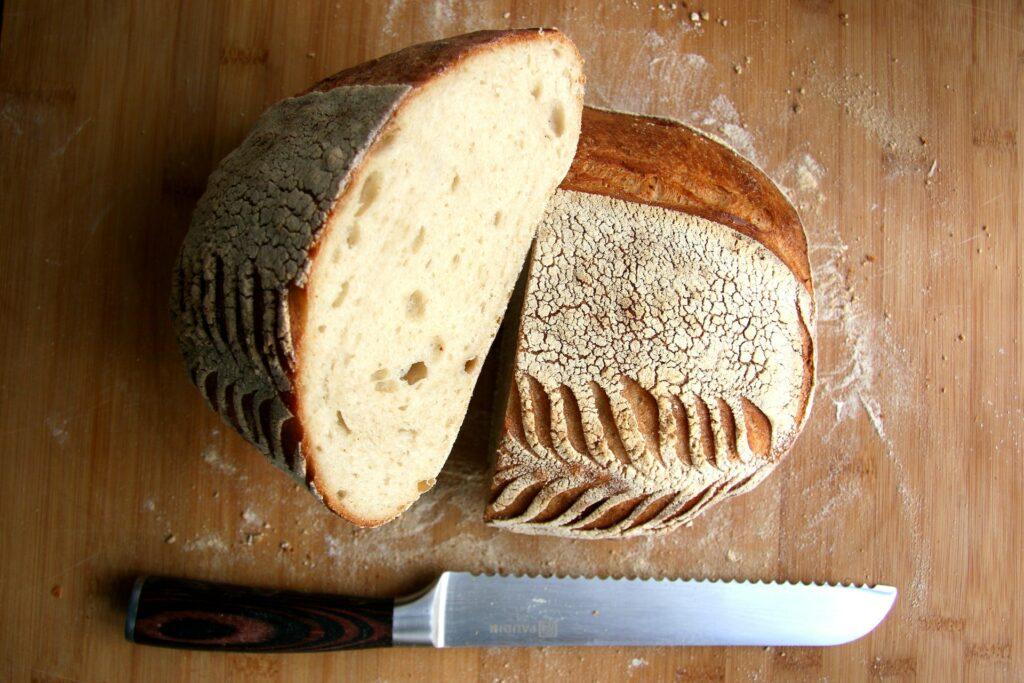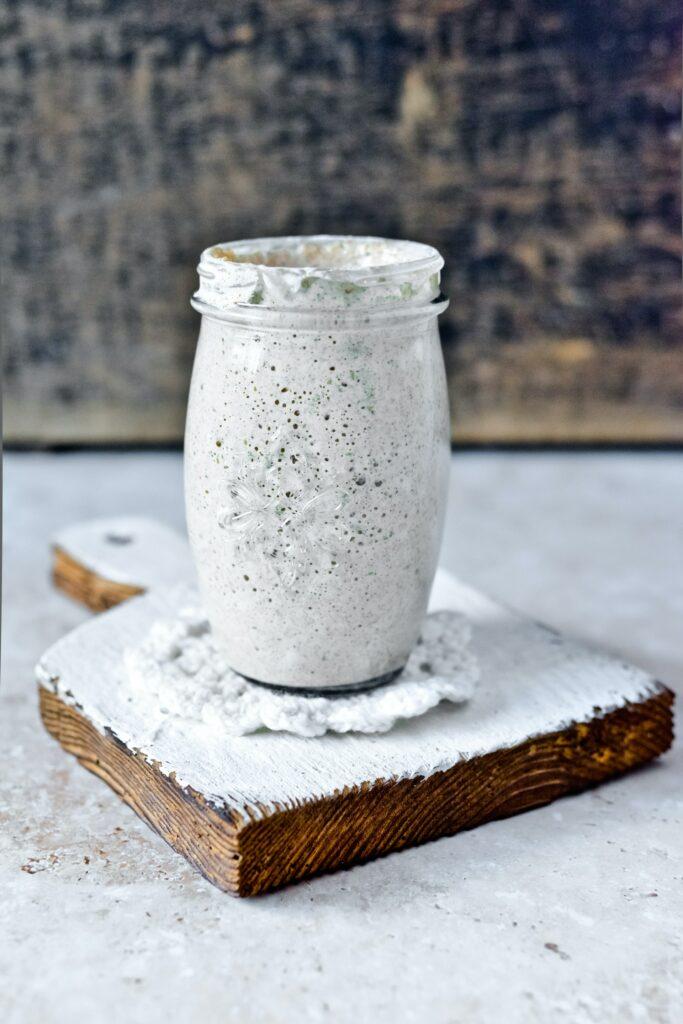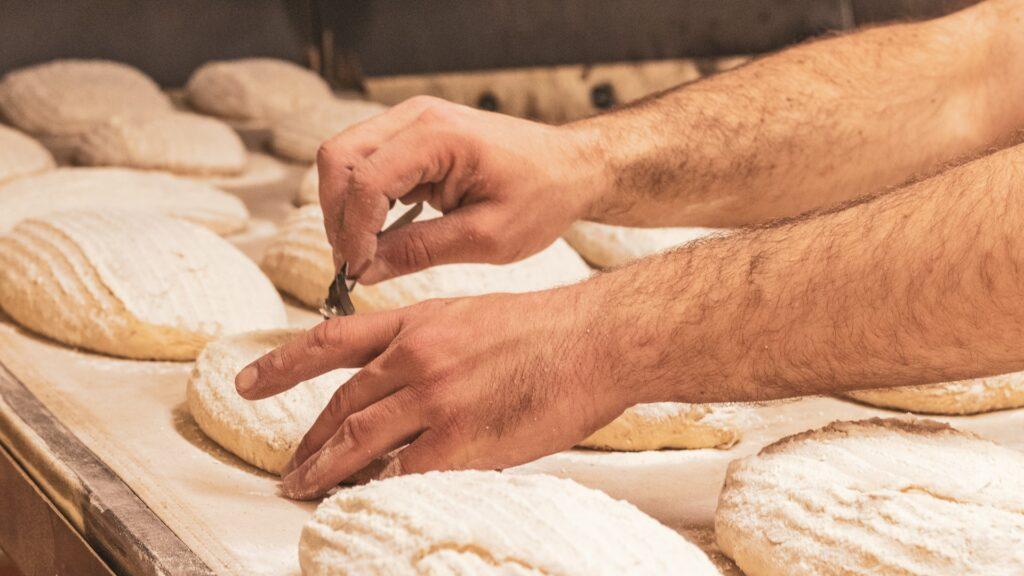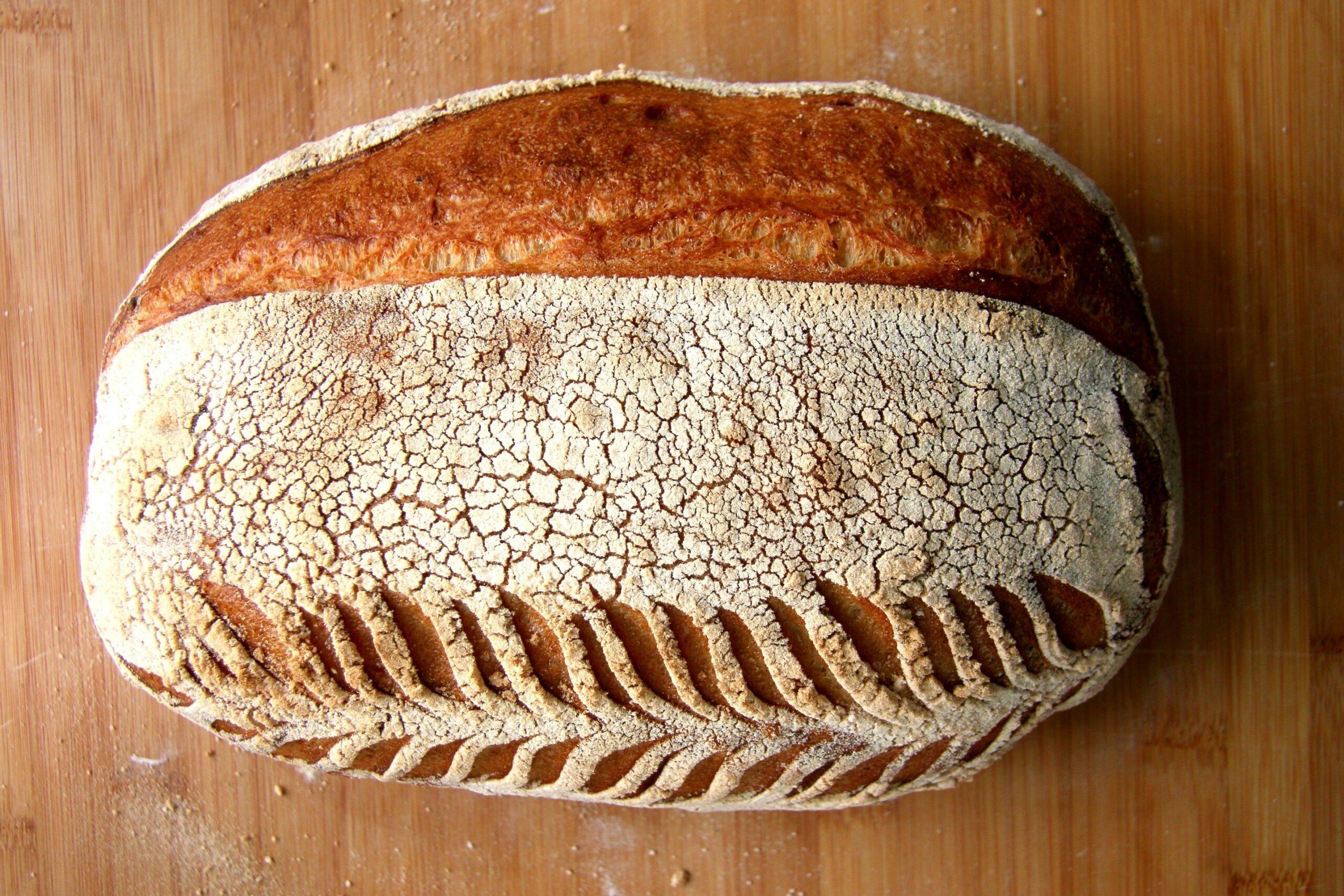Making homemade sourdough bread may seem like a daunting task, but it doesn’t have to be. With just a few simple steps, you can create a delicious loaf of sourdough bread right in your own kitchen. Not only is homemade bread healthier and more flavorful than store-bought bread, but it’s also a fun and rewarding activity that can be enjoyed with family and friends.
To make an easy homemade sourdough bread recipe, you’ll need a few basic ingredients: flour, water, salt, and a sourdough starter. A sourdough starter is a mixture of flour and water that has been fermented with wild yeast and bacteria. It’s what gives sourdough bread its unique tangy flavor and chewy texture. You can either make your own sourdough starter or purchase one from a bakery or online retailer. Once you have your starter, you’re ready to begin the bread-making process.
In this article, we’ll walk you through the steps of making an easy homemade sourdough bread recipe from start to finish. We’ll provide tips and tricks for creating the perfect loaf, including how to feed and maintain your sourdough starter, how to mix and knead the dough, and how to bake the bread to perfection. Whether you’re a seasoned baker or a beginner, this recipe is sure to impress. So grab your apron and let’s get started!
Contents
What is Sourdough Bread?

Sourdough bread is a type of bread made from a sourdough starter, which is a mixture of flour and water that is left to ferment for several days. This fermentation process allows wild yeast and bacteria to grow, which gives sourdough bread its distinctive tangy flavor and chewy texture.
Sourdough Starter
A sourdough starter is a mixture of flour and water that is used to make sourdough bread. The starter is made by combining equal parts of flour and water and leaving it to ferment for several days. During this time, wild yeast and bacteria grow in the mixture, which gives the starter its characteristic sour flavor.

To make a sourdough starter, you will need to mix together equal parts of flour and water and let it sit for several days. During this time, you will need to feed the starter by adding more flour and water, which will help to keep the yeast and bacteria alive.
Wild Yeast
Wild yeast is a type of yeast that is naturally present in the environment. It is different from commercial yeast, which is used to make most types of bread. Wild yeast is what gives sourdough bread its distinctive flavor and texture.
To make sourdough bread, you will need to use a sourdough starter, which contains wild yeast. The wild yeast in the starter will help to ferment the dough, which will give the bread its characteristic flavor and texture.
In conclusion, sourdough bread is a type of bread made from a sourdough starter, which is a mixture of flour and water that is left to ferment for several days. The fermentation process allows wild yeast and bacteria to grow, which gives sourdough bread its distinctive tangy flavor and chewy texture. To make sourdough bread, you will need to use a sourdough starter, which contains wild yeast. The wild yeast in the starter will help to ferment the dough, which will give the bread its characteristic flavor and texture.
Ingredients
Making sourdough bread requires only a few simple ingredients: flour, water, salt, and a sourdough starter. However, choosing the right type of flour and salt is crucial to achieving the perfect texture and flavor.
All-Purpose Flour
All-purpose flour is a versatile flour that can be used in a variety of recipes, including sourdough bread. It has a moderate protein content of around 8-11%, which makes it suitable for making bread that is not too dense or too light. All-purpose flour is also readily available and affordable, making it a popular choice for home bakers.
Bread Flour
Bread flour is a high-protein flour that is ideal for making bread. It has a protein content of around 12-14%, which helps to create a strong gluten structure in the dough. This results in a bread that is chewy and has a good crust. Bread flour can be used on its own or mixed with all-purpose flour to create a balance between structure and flavor.
Salt
Salt is an essential ingredient in sourdough bread. It helps to enhance the flavor of the bread and also acts as a natural preservative. When choosing salt for your sourdough bread, it is important to use a good quality sea salt or kosher salt. These types of salt have a more complex flavor profile and can help to bring out the flavors of the other ingredients.
When it comes to flour, some bakers prefer to use organic flour. Organic flour is free from pesticides and chemicals, making it a healthier option. It also has a more complex flavor profile than regular flour, which can add depth to your sourdough bread. However, organic flour can be more expensive and harder to find than regular flour.
In summary, choosing the right ingredients is key to making delicious sourdough bread. All-purpose flour and bread flour are both good options, depending on the texture you want to achieve. Using a good quality salt is also important to bring out the flavors of the other ingredients. And while organic flour is not necessary, it can add an extra layer of flavor to your bread.
Making the Dough
When it comes to making sourdough bread, the dough is the most important part. It’s what gives the bread its texture, flavor, and overall quality. In this section, we’ll go over the key steps to making the dough for your sourdough bread.
Mixing Bowl
First things first, you’ll need a mixing bowl. Any large bowl will do, but it’s best to use a glass or ceramic bowl as they are non-reactive and won’t affect the flavor of the dough. You should also make sure the bowl is clean and dry before adding your ingredients.
Scale
To ensure your dough is consistent every time, it’s important to weigh your ingredients using a kitchen scale. This is especially important when it comes to measuring the flour and water. You can find affordable kitchen scales online or at your local kitchen supply store.
Kneading the Dough
Once you’ve mixed your ingredients together, it’s time to knead the dough. Kneading helps to develop the gluten in the dough, which is what gives it its structure. You can knead the dough by hand or with a stand mixer fitted with a dough hook attachment. It’s important to knead the dough until it becomes smooth and elastic.
Desired Dough Temperature
The temperature of the dough is also important when it comes to making sourdough bread. The ideal temperature for the dough is around 78°F (25°C). If the dough is too cold, it will take longer to rise, and if it’s too warm, it will rise too quickly and may over-proof. You can use a thermometer to check the temperature of the dough.
In summary, making the dough for your sourdough bread requires a mixing bowl, kitchen scale, and proper kneading techniques. It’s also important to pay attention to the temperature of the dough to ensure it rises properly. By following these steps, you’ll be well on your way to making delicious homemade sourdough bread.
Proofing and Fermentation
Proofing and fermentation are two crucial steps in making homemade sourdough bread. The proofing process is when the dough rises due to the activity of the yeast and bacteria in the sourdough starter. The fermentation process is when the dough develops flavor and texture due to the breakdown of the starches and proteins in the flour.
Proofing Basket
A proofing basket, also known as a banneton, is a basket made of natural materials like cane or wicker that is used to hold the dough during the proofing process. The basket helps the dough keep its shape and prevents it from spreading out too much. Before using a proofing basket, it should be dusted with flour to prevent the dough from sticking.
Room Temperature
Proofing at room temperature is the most common method used by home bakers. The ideal temperature for proofing sourdough bread is between 75-80°F (24-27°C). At this temperature, the dough will rise in about 6-8 hours. However, the proofing time can vary depending on the strength of the sourdough starter, the type of flour used, and the humidity in the room.
Fridge
Proofing the dough in the fridge, also known as retarding, is a method used by many professional bakers. Retarding the dough slows down the fermentation process and allows the dough to develop more flavor. The dough can be left in the fridge for up to 24 hours before being shaped and baked.
Discard
Discard is the portion of the sourdough starter that is removed before feeding. It is called discard because it is not used in the bread-making process. However, discard can be used in other recipes like pancakes, waffles, and crackers. It can also be added to the dough to add flavor and texture.
Enzymes
Enzymes are naturally occurring proteins in the flour that break down the starches and proteins in the dough during the fermentation process. The enzymes are activated by the moisture and acidity in the dough. The longer the dough is fermented, the more complex the flavors and textures will be.
In conclusion, proofing and fermentation are essential steps in this homemade sourdough bread recipe. The proofing basket helps the dough keep its shape, and proofing at room temperature is the most common method used by home bakers. Retarding the dough in the fridge can add more flavor, and discard can be used in other recipes. Finally, enzymes play a crucial role in developing the flavor and texture of the dough during the fermentation process.
Shaping and Baking

Once your sourdough dough has gone through its final proofing, it’s time to shape it and bake it. There are a few different methods you can use, depending on the equipment you have available and the type of crust you want to achieve.
Dutch Oven
Using a Dutch oven is a popular method for baking sourdough bread because it creates a crispy, crackly crust. Here’s how to do it:
- Preheat your oven to 450°F (230°C) and place your Dutch oven inside to heat up.
- Carefully remove the hot Dutch oven from the oven and place a piece of parchment paper inside.
- Gently shape your dough into a round or oval shape and place it inside the Dutch oven.
- Score the top of the dough with a sharp knife or razor blade.
- Put the lid on the Dutch oven and return it to the oven.
- Bake for 20-25 minutes with the lid on, then remove the lid and bake for an additional 20-25 minutes, or until the crust is golden brown.
Loaf Pan
If you don’t have a Dutch oven, you can still achieve a delicious sourdough bread with a loaf pan. Here’s how:
- Preheat your oven to 450°F (230°C).
- Gently shape your dough into a rectangle that will fit into your loaf pan.
- Place the dough into a greased loaf pan.
- Score the top of the dough with a sharp knife or razor blade.
- Bake for 30-35 minutes, or until the crust is golden brown.
Burst of Steam
If you want to achieve a super crispy crust, you can try adding a burst of steam to your oven while the bread is baking. Here’s how:
- Preheat your oven to 450°F (230°C) and place a baking sheet on the bottom rack.
- Gently shape your dough and place it on a piece of parchment paper.
- Score the top of the dough with a sharp knife or razor blade.
- Carefully transfer the dough and parchment paper onto a baking stone or the middle rack of your oven.
- Quickly pour 1 cup of hot water onto the baking sheet on the bottom rack of the oven and quickly close the door to trap the steam inside.
- Bake for 20-25 minutes, then remove the baking sheet from the bottom rack and continue baking for an additional 20-25 minutes, or until the crust is golden brown.
Shaping and baking your sourdough bread takes a bit of practice, but with these methods, you can achieve a delicious, crusty loaf every time.
Troubleshooting and Tips
As with any sourdough bread recipe, there are a few things that can go wrong along the way. Here are some common troubleshooting tips to help you achieve the perfect loaf.
Gluten Development
One of the keys to a good sourdough bread is gluten development. To ensure proper gluten development, make sure to give your dough enough time to rest and rise. Kneading the dough can also help develop gluten, but be careful not to over-knead, as this can lead to a tough and chewy texture.
Float Test
The float test is a simple way to check whether your sourdough starter is ready to use. Simply drop a small amount of your starter into a bowl of water. If it floats, it’s ready to use. If it sinks, give it a bit more time to ferment.
Sourdough Flavor
The flavor of your sourdough bread recipe depends on the quality of your starter. To ensure a strong sourdough flavor, feed your starter regularly and let it ferment for at least 12 hours before using it in your bread dough.
Tap Water
The quality of your water can also affect the flavor of your bread. If your tap water has a strong chlorine or mineral taste, consider using filtered or bottled water instead.
Instant Yeast
If you’re new to sourdough bread recipe, you may want to consider using a bit of instant yeast in your dough to help it rise. This can help ensure a more consistent rise and texture, especially if you’re still getting the hang of sourdough baking.
Remember, sourdough bread recipe is as much an art as it is a science. Don’t be afraid to experiment and make adjustments to find the perfect recipe for your taste. With a bit of practice and patience, you’ll be baking delicious sourdough bread in no time!
Conclusion
In conclusion, making homemade sourdough bread is a rewarding and satisfying experience that anyone can enjoy. With a few simple ingredients and some patience, you can create a delicious and healthy loaf of bread that is perfect for any occasion.
Throughout this sourdough bread recipe we have explored the basics of sourdough bread-making, from creating and maintaining a sourdough starter to the various techniques for mixing, fermenting, shaping, and baking the dough. We have also provided some tips and tricks to help you achieve the perfect loaf, such as using the right flour, water, and salt, and adjusting the temperature and humidity of your kitchen.
One of the great benefits of trying this sourdough bread recipe at home is that you have complete control over the ingredients and the process. You can experiment with different types of flour, such as whole wheat, rye, or spelt, and add your own flavors and textures, such as seeds, nuts, or dried fruit. You can also adjust the fermentation time and temperature to suit your own tastes and preferences, whether you prefer a more sour or mild flavor, a denser or lighter texture, or a crustier or softer crust.
In addition to the delicious taste and texture of sourdough bread, there are also many health benefits to eating this type of bread. Sourdough bread is easier to digest than regular bread, thanks to the natural fermentation process that breaks down the gluten and other complex carbohydrates. Sourdough bread is also lower in glycemic index, which means it can help regulate blood sugar levels and reduce the risk of diabetes and other chronic diseases.
So why not give this homemade sourdough bread recipe a try? Whether you are a seasoned baker or a beginner, there is no better time to start than now. With a little practice and patience, you can create your own delicious and healthy sourdough bread recipe that will impress your friends and family and make you feel proud and accomplished. Happy baking!



![Pudding Gets Watery in Fridge [5 reasons & Fixes]](https://kitchenbarrels.com/wp-content/uploads/2023/01/pudding-gets-watery-in-fridge.jpg)

![Does Kraft Mac and Cheese Expire or Go Bad? [Explained]](https://kitchenbarrels.com/wp-content/uploads/2022/09/Does-Kraft-Mac-and-Cheese-Expire-or-Go-Bad.jpg)
![Froth Milk Hot or Cold? [Which One Is Better]](https://kitchenbarrels.com/wp-content/uploads/2022/12/froth-milk-hot-or-cold.jpg)


